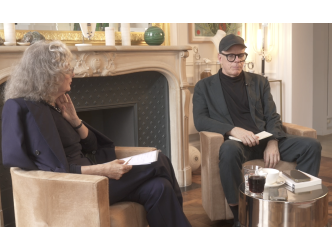Gloomy
The world is in crisis. The general mood is gloomy, and the art market is feeling the strain, as evidenced by the noticeable drop in transactions during the recent modern and contemporary art auctions in New York. Yet one specialty remains untouched by this general reconfiguration of value: 20th-century decorative arts, and more specifically, the creations of French couple François-Xavier (1937-2008) and Claude Lalanne (1927-2019). (See here and here other reports about the Lalanne)
Artists/designers

These artist-designers, known respectively for their stylized animal forms and botanical sculptures, almost always exhibited together. On May 21, 2025, at Sotheby’s Paris, a decorative arts sale estimated at €9.6 million ultimately fetched €27.1 million, while a famous “Bar aux autruches”(Ostriches freestanding bar) by François-Xavier Lalanne sold for a staggering €11.1 million, far exceeding its €3 million estimate.
Elysée Palace
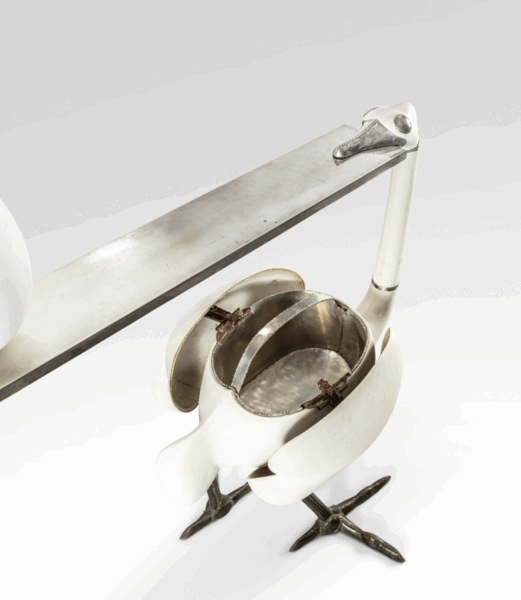
This eccentric and monumental piece, designed between 1967 and 1970, features two Sèvres porcelain ostriches facing each other, balancing a tray in their beaks, which supports a large egg that doubles as an ice bucket. Under each of the birds’ movable wings are two hidden compartments—one for glasses, the other for bottles. By coincidence, the Guimet Museum in Paris is currently exhibiting Khmer bronzes, one of which — a small 20th-century betel set shaped like a peacock — curiously calls to mind François-Xavier Lalanne’s functional ostriches.
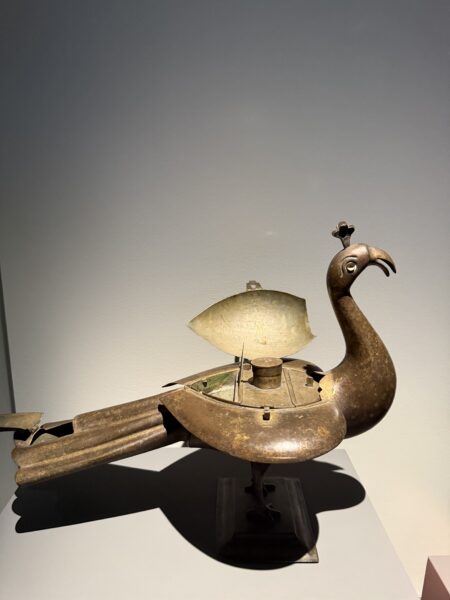
Cambodian betel set, 20th Century
François-Xavier created six of these bars; one still is supposed to reside in a salon of the Élysée Palace, part of an ensemble designed by Pierre Paulin at the request of President Georges Pompidou. (Still, no current image or footage can be found of the bar in context.)
Jacques Grange
Another belongs to the National Ceramics Museum in Sèvres. In 2017, renowned French decorator Jacques Grange sold one from his personal collection, for €6,1 million which he had acquired in 2005 for just €128,300.
Seven bidders
In contrast to the contemporary art market, where only a handful of buyers compete at the top tier, seven bidders fought for the ostriches bar on May 21, with three competing above the €5 million mark. (See here the report about the recent contemporary auctions in New York). “Given the current context, I couldn’t possibly announce a €7 million estimate,” explained Florent Jeanniard, Sotheby’s Head of Design. The extraordinary bar was reportedly acquired by a contemporary art collector.
A few years ago, according to professional source one version also belonged to the Russian oligarch Roman Abramovich.
Rhinocrétaire
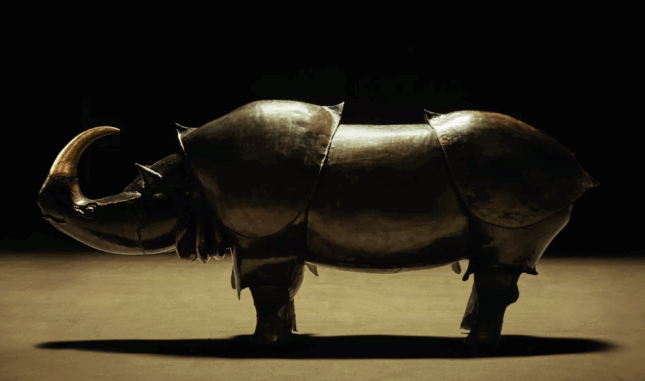
In the stratosphere of Lalanne prices, this ostrich bar ranks only third. At the top sits a three-meter-long metallic “Rhinocrétaire”: The portmanteau title refers to a rhinoceros that opens up to reveal a secretary desk. It was sold for €18.3 million in 2023.
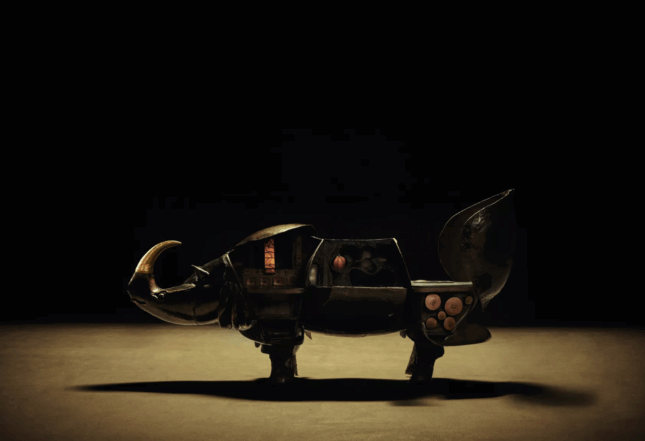
Choupatte
Meanwhile, Claude’s auction record, according to Artprice, was set in October 2023 at €4.9 million for a unique large bronze “Choupatte” from 2008. The piece, standing 1.3 meters tall, depicts a cauliflower on chicken legs.

Jean Gabriel Mitterrand
Gallerist Jean-Gabriel Mitterrand, who has represented the Lalannes since 1975 and now works with their estate, recalls: “Claude was deeply connected to nature. Early on, when asked for one of her famous Choupattes, she would sometimes reply: ‘I can’t right now, there are no cauliflowers in my garden.’” Claude used galvanoplasty, “a method of metal electroforming taken directly from real plants.” The Choupattes, like many Lalanne successes, exist in countless formats. However, according to Mitterand, the couple always refused to produce a catalogue raisonné. “That said,” notes Mitterrand, “the family maintains notebooks meticulously recording their output.”
The Lalannes’ career took off in the late 1960s when the visionary gallerist Alexandre Iolas—who also championed Magritte and Niki de Saint Phalle—took them under his wing. Soon, figures like Yves Saint Laurent, Marie-Laure de Noailles and Marie-Hélène de Rothschild began acquiring Lalanne works.
Yves Saint Laurent
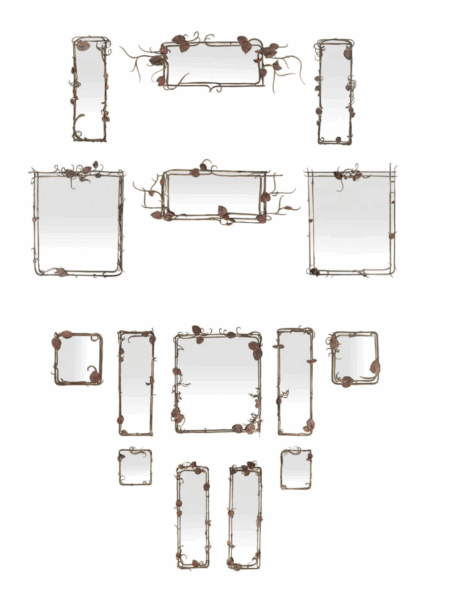
Claude Lalanne
A second key moment in their market trajectory came in 2009, when Christie’s Paris auctioned off the contents of Yves Saint Laurent’s legendary Rue de Babylone apartment. Highlights included a surrealist-inspired metal bar by François-Xavier that fetched €2.7 million, and a series of 15 mirrors with metal frames in the shape of vines designed by Claude that sold for €1.7 million.
This was followed by a string of major sales direct from the Lalanne studios, which released a large number of works onto the market. Rather than oversaturating demand, these events only heightened desire and competition among wealthy collectors.
The first of these sales, in 2019, was organized by the couple’s heirs to pay inheritance taxes: 244 lots brought in €91.3 million. That spectacular sale was followed by three more between 2020 and 2023, each initiated by one of Claude’s daughters. The trend has only grown. A key figure in this surge is influential American decorator Peter Marino, who is said to own at least 30 concrete Lalanne sheep, all installed in the garden of his Hamptons estate.

c P Marino
Universal art
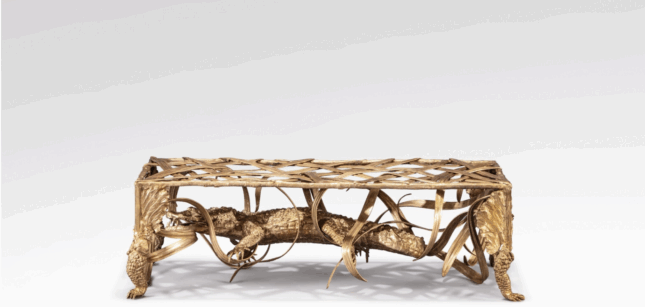
Claude Lalanne
“It’s a universal art, the likes of which are rare,” says Florent Jeanniard, who shared anecdotes of illustrious owners, like “Karl Lagerfeld’s drafting table, or the four Lalanne sheep belonging to Gunther Sachs, Brigitte Bardot’s former partner, that sold for €2 million.”
From the Kardashians to Bezos

Today, a wide variety of collectors—from the Kardashians, to Amazon founder Jeff Bezos and Blackstone CEO Stephen A. Schwarzman— and even the talk show host, Ellen DeGeneres, each have their Lalanne.

Daily Mail
Flying Horse
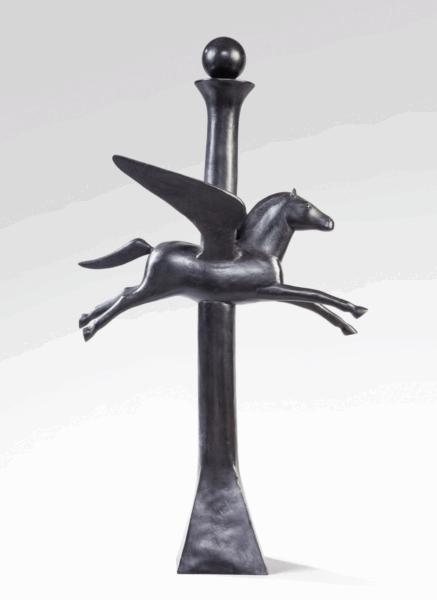
On May 20, Sotheby’s sold a “Flying Horse” by François-Xavier—a small bronze column topped with a mythological winged horse—for €216,000. It had been estimated at €50,000. In 2022, a similar edition had sold for just €47,900.
Monumental duck
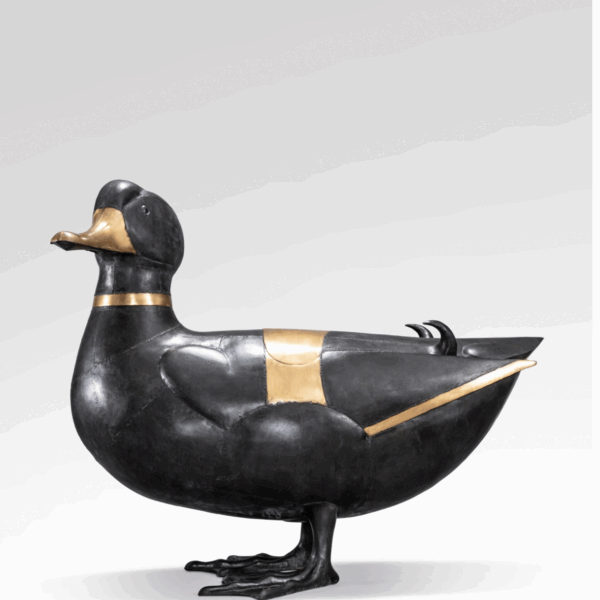
That same day, a monumental tin and bronze duck (1.9 meters long) with a rotating head sold for €1.9 million, far above its €700,000 estimate. In 2021, a slightly larger model had fetched “only” €1 million.
x4 in 15 years
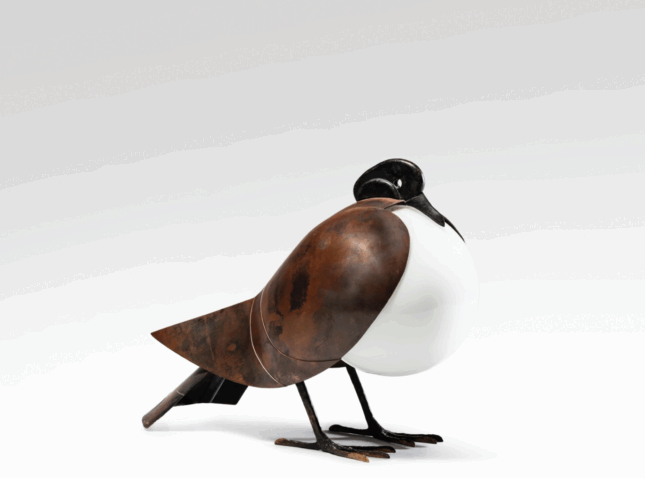
“Overall, you could say that prices have quadrupled in 15 years,” summarizes Sotheby’s Head of Design. For Mitterrand, two factors explain this phenomenal success: “The Lalannes have become a truly global reference. And their works are available in quantity.”
Artists or not artists
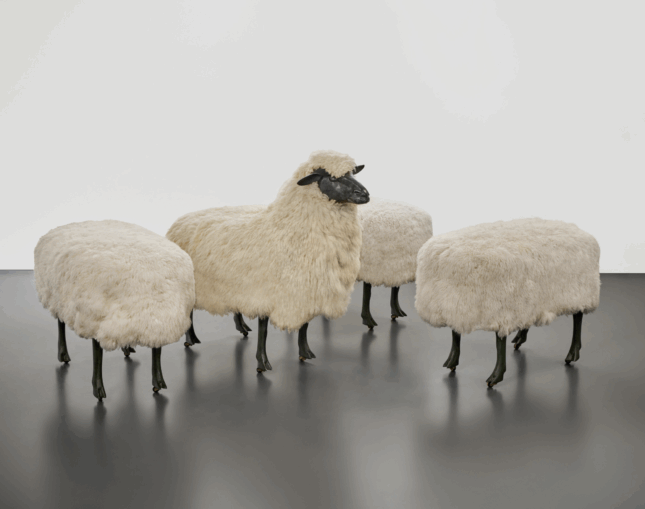
With their rising market, the Lalannes are now increasingly being classified as artists, rather than merely decorative arts creators. This shift was evident on May 15, 2025, during Sotheby’s contemporary art sales in New York, where a wool-covered sheep and three small sheep-footed benches in a surrealist style were estimated at €1.3 million. Unsurprisingly, this pseudo-flock set off for more luxurious pastures, exceeding expectations at €2.1 million.
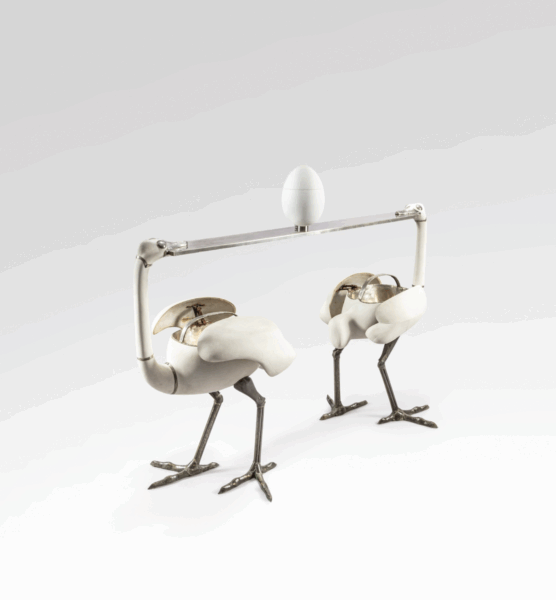
Support independent news on art.
Your contribution : Make a monthly commitment to support JB Reports or a one-off contribution as and when you feel like it. Choose the option that suits you best.
Need to cancel a recurring donation? Please go here.
The donation is considered to be a subscription for a fee set by the donor and for a duration also set by the donor.




